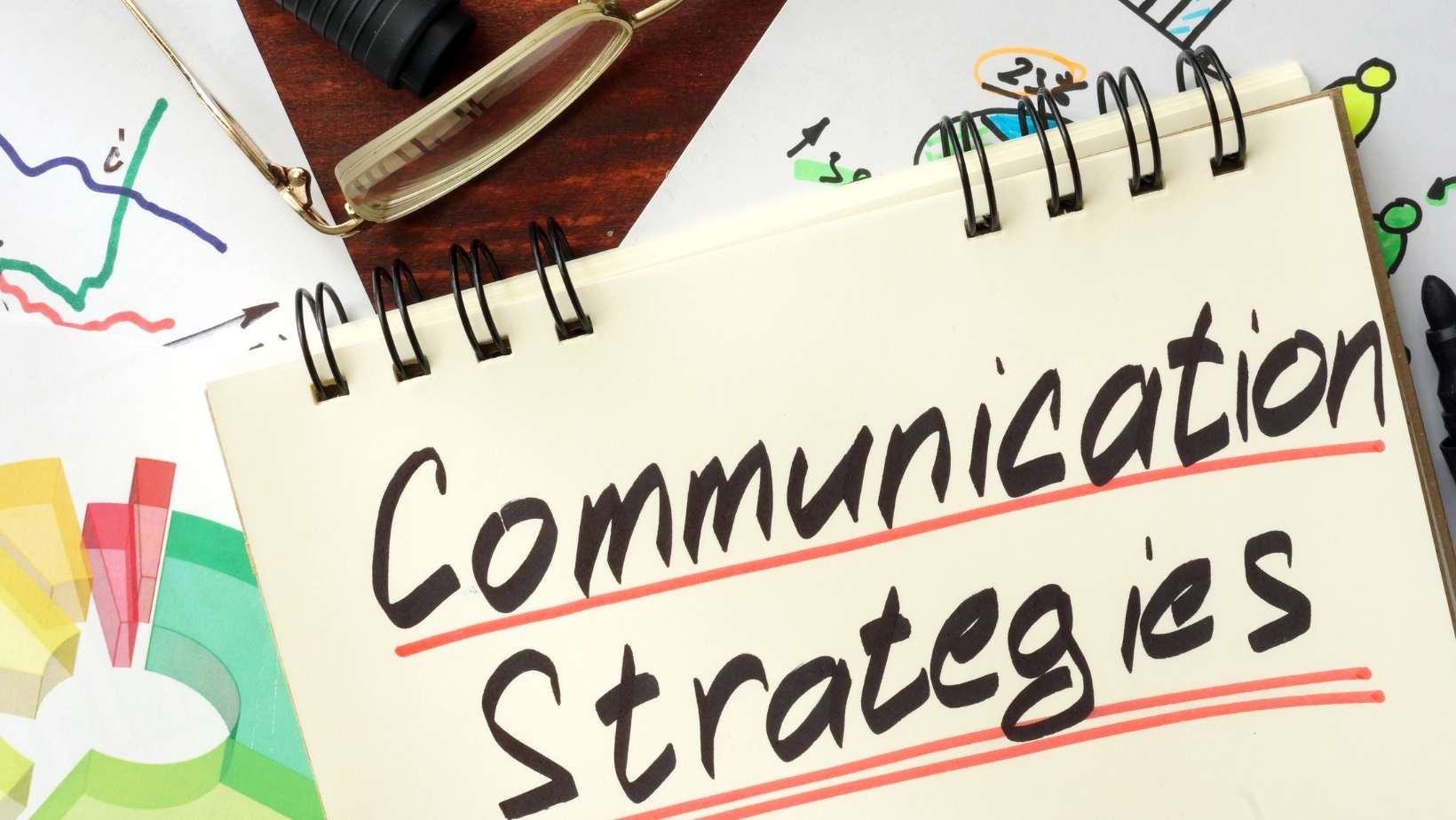
Marketing and communications, or MarCom as it is fondly called, is the practice of using various channels and related tools which help interact with the desired market. A mechanism to create brand awareness and increase sales.
In marketing, the channels of communication focus on how a business will communicate a message to its desired market.
Marcom is a field where a brand’s creativity and critical thinking are being tested. In fact, human psychology is also involved. Brands require an understanding of what makes people believe in them.
Page Contents
What is Marketing Communication?
Marketing communication is a technique that a business or a brand uses to convey messages which are promotional in nature about their products and services.
Communication is not about passing messages but the design of the messages such that it oozes confidence pertaining to the brand at the same time persuasive to the target audience.
For any business marketing communications is a way and means to increase the sales volume by sending informative, and positive messages.
Marketing communication also provides new facts about products/services.
Marketing Communication Definition
AMA describes “Marketing communications are coordinated promotional messages and related media used to communicate with a market. Marketing communications messages are delivered through one or more channels such as digital media, print, radio, television, direct mail, and personal selling”
Marketing Communication Objectives
Marketing communication has two-pronged objectives. The first is to create and maintain demand for the product.
The second is to make the sales cycle shorter.
Creating preference
Creating preference takes a longer period of time. Hence the effort required would be more so that customers would connect and recognize the brand quickly. This process of brand “positioning“ is immensely critical.
The brand-building needs consistency. It should not only be in efforts related to communication but also with respect to other elements of the marketing mix that is, Product, Pricing, and Placement. Overall a thorough commitment is required.

Building a brand affects the bottom line (Revenue) positively. The same goes with market share and profitability.
Shortening the sales cycle
The end-to-end process of production to selling the product or service gets shorter, thereby increasing the profitability.
At the same time, our sales partners and channel partners will be happy as the products are moving faster. The opportunity to identify and engage with the customers increases.
Also, understanding the customer’s buying process provides a healthy insight as to how we can shorten the sales cycle?
Market research plays a vital role and provides relevant data. This will help a salesperson to know what is going well and what is not. The sales department must identify the gap areas and means to rectify them that can help speed up the entire process.
In technical products, the major portion of the sales cycle is consumed by customer education. Customers would like to understand the product and the technicalities in the early stages. This helps them recognize the value of the product they intend to buy.
Communication must also focus on creating and delivering relevant details pertaining to the product. Brochures, literature, and manuals are developed. Providing information to the buyer throughout the journey is an excellent way of winning their trust.
From the discussion above we have understood that shortening the sales cycle is more technical in nature compared to brand building.
It is crucial to note that it is not about which one is best or more important. But our efforts should be a balanced one. However, this depends a lot on the company’s objectives and vision.
Types Marketing Communication
There are also 4 fundamental types of communication.
One-to-many
This is one of the most basic forms of communication. It originates from a single point (known as a Broadcast point) and is available over airwaves or for mass printing.
This type of communication is usually suitable for news distribution. They are not specific or interactive in nature. Thus it is helpful for the general announcement.
Many-to-one
In this mode, there will be many originating points culminating in one single point. For example, a brand wants to know the feedback about the product. It sends out the feedback survey. People fill them up and send them back to the company.
One-to-one
The most interactive form of communication and generally pretty intensive as well.
Examples would be, a negotiation with the client or direct delivery, retail stores. This type of communication is mostly face-to-face.
But in the era of the Internet, instant messages and video chats have also become part of one-to-one communication.
Also, with online shopping provided the chance for sellers and buyers to talk more directly.
Many-to-many
Online chat rooms, ‘blogging’ websites, and specialized forums are examples of many-to-many communication.
Here participants exchange their ideas and experiences. Many-to-many channels are less urgent by nature but with greater longevity. In contrast, one-to-one is more immediate.
Approaches in Marketing Communications
Inside–out approach
An “inside-out” approach is a traditional approach in marketing communication. Here planning starts “inside” the organization.
Goals and objectives are identified which are in sync with the company’s mission and vision statement. The job of communication in this case is to promote (or to “sell”) the organization’s views to the “outside” world.
However, some experts are critical of this approach. According to them, this kind of communication projects a one-sided viewpoint.
They also pointed out that of course, the organization unanimously speaks about the one that a brand feel is important But they disregard the customer’s viewpoint, not a well-rounded approach. This inside–out approach is considered weak and rather outdated.
Outside–in approach
This approach tries to understand the needs and wants of the consumer.
Organizations tend to gain in-depth knowledge based on consumers’ viewpoints. This gives them a chance to accommodate the way they approach to fulfill their requirements.
Relationship marketing is of great help here, supports in building relations through frequent conversations between organizations and customers.
This kind of communication builds rapport. And once the trust factor comes into the picture the entire process becomes smooth.
This method is unique in itself as it places customers first. In turn customer’s, perceived value with respect to the product or service goes up significantly.
Cross-functional approach
This approach deviates from the previous two. This instead is more focused on restructuring the organization to make a holistic environment.
This approach realizes that information is not a lookout of the marketing department alone. Rather it can come from any department within the organization.
Today departments cannot work in silos. They should work cohesively to manage and contribute to planning at all stages of brand building.
Not to forget that if a unified organization, works like a well-oiled machine, the cross-functional process then becomes a competitive advantage.
This can be achieved by improving the relation amongst messages sent from all departments through channels to the receivers.
By sending relevant messages and monitoring consumer reactions an organization collects feedback data.
Those can be then used as input in future planning. This can also be used in rectification or fine-tuning the current process.
The process is a loop and definitely not linear.
It begins with organization and consumer communication. Positive interaction strengthens the relationship.
Over time trust is earned. The consumer then wishes to purchase, which increases sales and profitability for the organization. Ultimately, the relationship becomes stronger and the organization wins and retains loyal customers.
Communication is not a one-time job, it is a flexible process due to the dynamic nature of marketing.
Importance of Marketing Communication
Marketing communication focuses on how to stay in touch with your customers at the same time convey important information about the company.
Sales Prospects
For a company better the promotion better the sales prospects. So, communicating with customers becomes important to keep them well informed of new developments. This is a great way to promote your products and services.
When a brand launch a new product or a new store is opened information regarding these is communicated to make them aware.
The purpose of this kind of marketing communication is to encourage customers to act or to increase engagement.
One example could be is an e-mail broadcast to inform consumers about an upcoming sale Or to provide a link to the company’s new product line in those messages.
Inform and Educate
Effective communication is where customers become interested. One way of doing that is to provide customers or potential customers with relevant information about the product, service, business, or industry.
For example, tire manufacturing company Bridgestone is well known for this strategy. They produce useful educational videos, so much so that a team is dedicated to it. What’s more, according to them, consumers themselves had started demanding those videos.
The objective of this kind of marketing communication is to provide knowledge about the product and also its expertise while encouraging people to use more of those.
Retention of Existing Customers
An objective of effective marketing communication is to retain your existing customers. Retaining a customer is way cheaper than bringing a new one.
Establishing customer loyalty programs is one way of achieving these. This is like letting your customers know you appreciate their association and reward them. This will increase brand value.
Upselling and cross-selling happen here to offer better products, resulting in increased income for the business.
Referrals from Existing Customers
Bringing in new business by way of existing customers is an objective of marketing communication practices.
once the existing customer becomes the brand advocate, they can bring in more business for the organization, that too without any marketing efforts.
Communicating with existing customers is important. This is done via social media, email and the interactive website. This generates trust which helps in getting referrals.
Rewarding customers for their referrals further strengthens the relationship with them.
Building Brand Awareness
Every communication message that is shared should reinforce the brand image in the mind of consumers.
This can be accomplished through consistent and quality messaging.
It is important to know that even color schemes, logos and graphic design on all marketing materials influence the minds of the consumers. They tend to associate these messages with the company and the product, creating a strong brand identity.
Some great examples of Marketing Communication
Budweiser – “Wasssup”
On Budweiser’s memorable “Wasssup” campaign, Robert Wong of Google Creative Lab, says “by far the most iconic, pop-culture spiking and memed ad of the 21st century”.

Dove – “Campaign for Real Beauty”
This campaign began as a series of billboards in Canada and London. Featured women were not celebrities but were common people. The campaign sparked a conversation about female beauty.

Conclusion
Marketing communication facilitates a business to develop avenues for reaching out and interacting with customers. Maintaining healthy communication creates an avenue for promoting the products and services while building or maintaining brand awareness.
Therefore, every company in order to survive and grow has to play the role of an effective communicator in the present competitive environment.